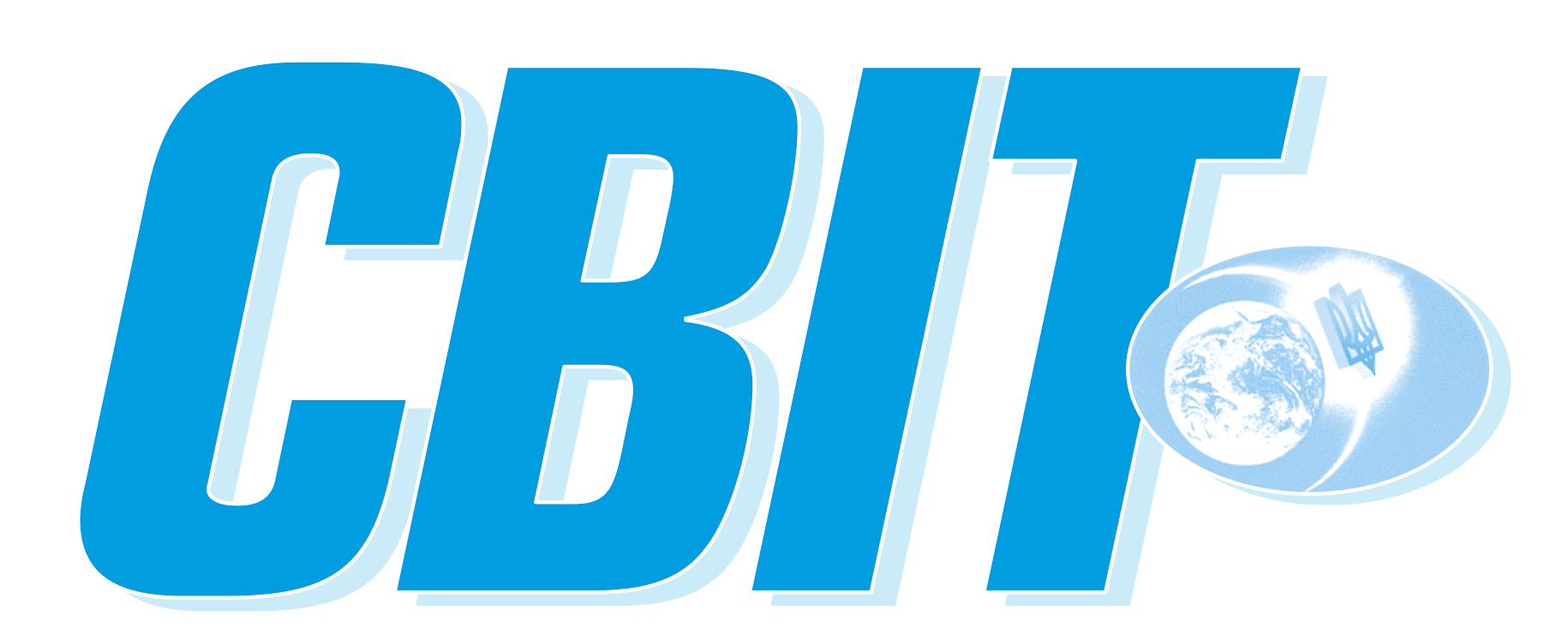According to various estimates, from 5 to 6 thousand hectares of forest were damaged as a result of “wild” amber mining in Ukrainian Polissya. It equals the area of Zhytomyr. While foresters count the damage from unsold timber, environmentalists clutch heads because of the damage to the environment, including the climate.
Today, every Ukrainian knows about amber Klondike. The state recognizes the problem and tries to fight it. We will tell this year in future publications how the science can help in this case.
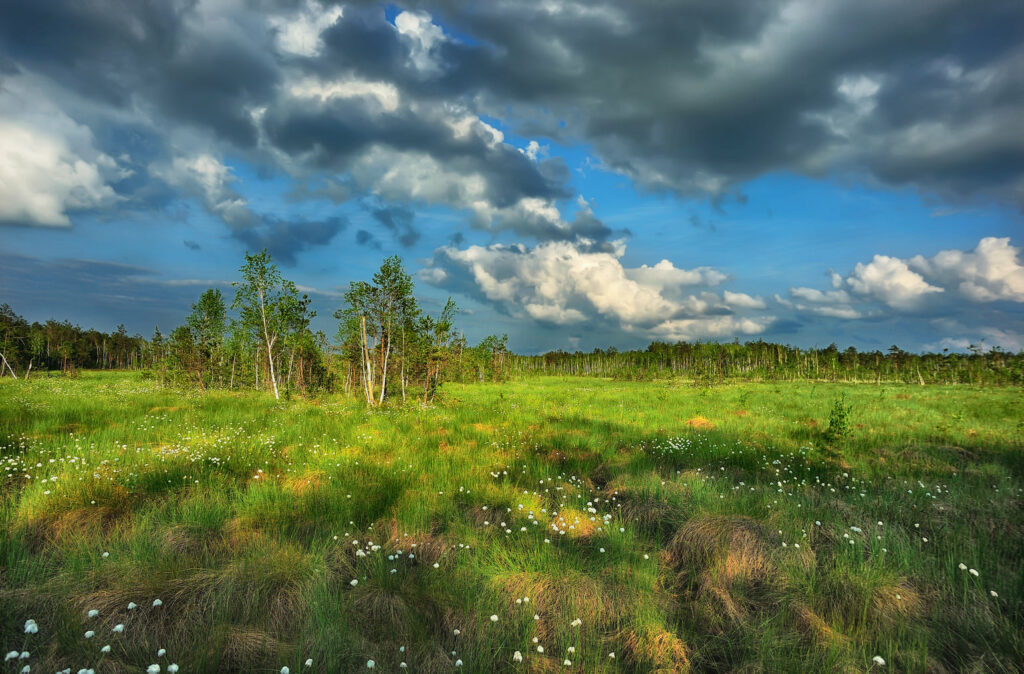
But in the meantime, even more horrific events take place in Polissya, which remain unnoticed by the general public. It is the drainage of swamps and large-scale extraction of peat. It takes place officially and, apparently, quite legally.
In their natural, moist state, peatlands provide indispensable natural solutions for adapting to and mitigating the effects of climate change, including regulating water flows and minimizing the risk of floods. Wet peatlands reduce the temperature in the surrounding areas and are less prone to burning during forest fires. This helps to maintain air quality. It may sound strange, but swamps and peatlands are much more valuable than forests in terms of climate protection. According to the International Union for Conservation of Nature, the peat soils of our planet contain more than 600 gigatons of carbon, which is up to 44% of all soil carbon. This amount exceeds the carbon content stored in all other types of vegetation, including the world’s forests.
But drainage of peatlands reduces the quality of drinking water, as it becomes poisoned by organic carbon and pollutants that peat absorbs them.
DRAINING SWAMPS IS BAD?
Yes, it is bad, and it is confirmed by scientific research and recognized at the state level.
“The general decrease in the water content of rivers causes an increase in pollution and a corresponding water quality deterioration. Due to rising temperatures and draining of swamps in the past, wetlands and lakes in Polissya and northern Ukraine continue to dry up, which result in more frequent fires and worsening air quality. Due to the reduction of precipitation (in particular, outside Ukraine) during the summer, the surface runoff of rivers may reduce by half, so the water deficit will significantly increase.” This is a quote from the Strategy for Environmental Security and Adaptation to Climate Change until 2030. The Cabinet of Ministers approved it by its Order No.1363-р on October 20, 2021.
It is necessary “… to prohibit the extraction of peat on forest lands and to restore drained and degraded wetlands within the forest fund. It is also necessary to ban the extraction of peat on lands where it was not previously extracted, and to restore degraded wetlands at peat fields”, – states the Analytical Review of the updated National Determined Contribution of Ukraine to the Paris Agreement.
LEFT HAND DOESN’T KNOW WHAT DOES RIGHT ONE DO?
On the border of Volyn and Rivne region an extremely valuable natural area is located, it is Koza-Berezyna swamp. Half of the swamp in Rivne region is part of the Rivne Nature Reserve. Together with the buffer zone and Lake Bile, this part is also declared a Ramsar wetland. This is another recognition of the value of the territory. Wetland area “UA – 2281. Bile Lake and Koza-Berezyna Swamp” equals 8 thousand hectares. This wetland ensures the hydrological regime between the Pripyat, Stokhod and Styr rivers. Koza swamp and the small Berezyna river form a relict valley through which water flowed during the melting of the glacier. All this hydrological and climatic wealth is threatened with extinction. It is caused by the fact that in the other, Volyn half of the swamp, which, unfortunately, remaines outside the strict protection, a large-scale drainage will take place.
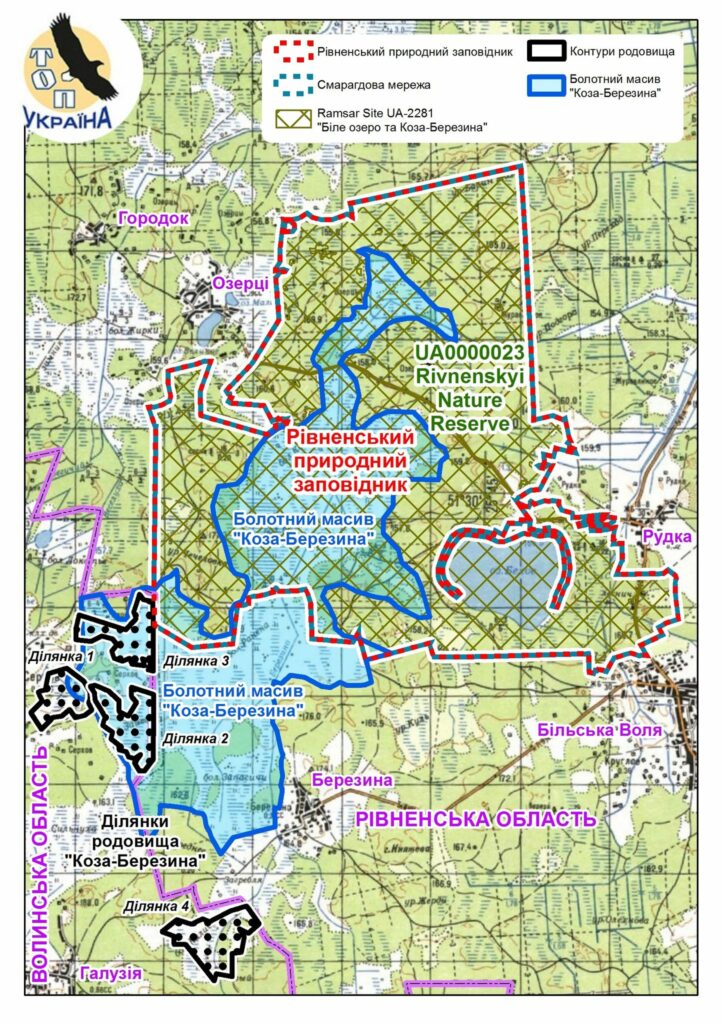
However, the respective physical law works for the wetlands as well. If you drain one land, the water level will drop in others.
Yaroslav Kurepa, geologist in the Volyn Geological Expedition, stated it seven years ago in his expert opinion, when he analyzed the consequences of possible drainage of Koza-Berezyna in Volyn.
“The planned drainage of the Koza-Berezyna field… will reduce the level of natural drainage of groundwater in the Kiliyev swamp and wetlands of the Kryvukha area in the northeast direction.
The transfer of part of the surface runoff of the eastern arm of the wetland, with a change in the runoff of the western arm, may reduce the flow of water to the Berezyna river, Zapasychi, Ranena and Koza swamps, which are located below the level of the drained area.
Systematic reduction of water inflow may cause changes in the hydrological regime of the entire wetland, which is part of the Beloozersky area of the Rivne Nature Reserve”, the expert said.
WHAT FOR?
The Volynpryrodresurs (‘Volyn natural resources’) municipal company wants to extract peat on 550 hectares (I recall that amber poachers damaged about 6,000 hectares) in the southern part of the Koza-Berezyna area.
The main profile of this area, by the way, is the extraction of amber.
The Ministry of Environment has already twice rejected the applications of this enterprise for peat extraction in Koza-Berezyna. The reason is the extremely low quality of Environmental Impact Assessment (EIA) reports. The third version of the report, according to independent experts, was also made carelessly.
“Despite the large volume and availability of field research data in the new report, the authors claim that there is no significant negative impact on the environment. But this is not the case”, ecologist Bohdan Kuchenko of the Ecology-Law-Human organization said. Thus, in Section 5, the authors of the EIA report write that “the impact on climate and microclimate during the development of the peat field is not expected”. This is an obvious lie.
The company plans to extract 960 thousand tons of peat within 12 years. In particular, it is needed for the production of fuel peat briquettes. This contradicts the global trend and the statements of the Government and the President of Ukraine about the need to reduce the use of fossil fuels and reduce greenhouse gas emissions.
Not to mention that the water in the wells far beyond the peat extraction sites can disappear. And the Dnipro river will remain without water replenishment, which now comes from this region of Polissya. Also, due to lower groundwater levels, the fire risk will increase. Let me remind you that in Polissya more than 120 thousand hectares of forests and peatlands burned in the spring and summer of 2020.
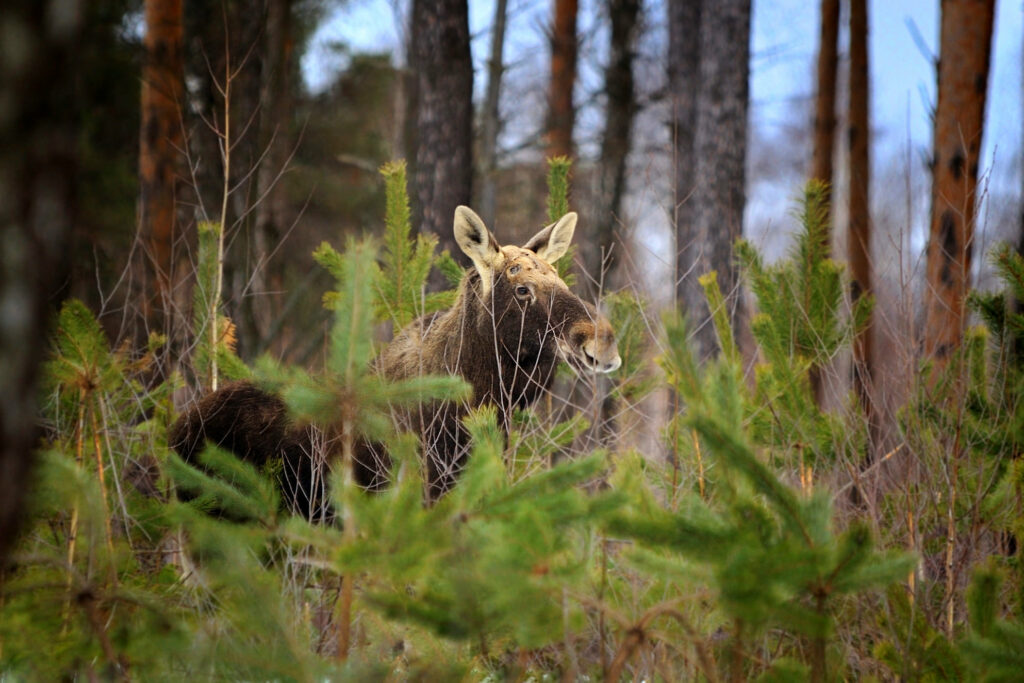
Koza-Berezyna is a shelter for many animals and plants, in particular, rare ones.
LYNX AND OWLS MUST NOT SUFFER
Seven years ago, specialists from the Rivne Reserve received information about the presence of Red Book species (gray crane, owl, gray shrike) in the area designed for peat extraction. “These birds are typical for swamps and wetlands. Therefore, the work on peat extraction in the upper reach of the Berezyna river contradicts the measures aimed at protection of rare species of animals listed in the Red Book of Ukraine, in accordance with Part 1-4 of Art. 11 of the Law of Ukraine “On the Red Book”, – ornithologist Mykhailo Khymyna said.
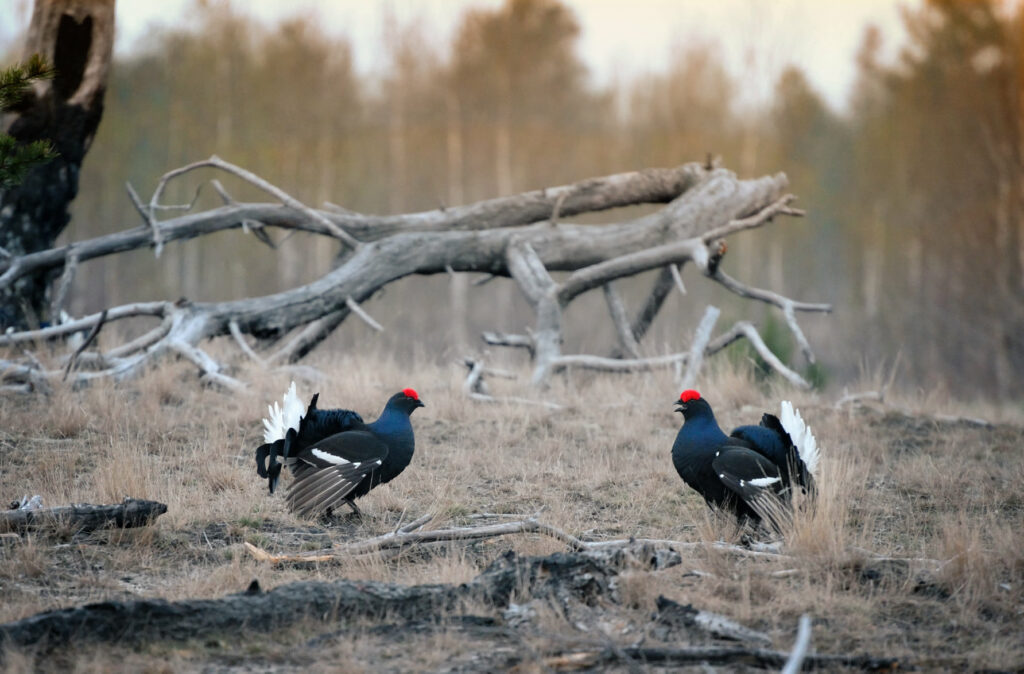
And what is there today? Maybe a rare lynx lives? Is there a unique sundew plant that hunts insects? Other species of animals and plants? But who knows it… Zoologists and botanists were not involved in the preparation of the EIA report, in the detailed survey of the territory. The need for professional research is indicated in numerous comments to the report. Both specialized non-governmental organizations, with which scientists of various profiles work as volunteers (Ukrainian Nature Conservation Group, Ecology-Law-Human, Ecoclub, Ukrainian Society for the Protection of Birds), and Rivne Nature Reserve write about it.
“Most of the Koza-Berezyna wetland, which includes the peat deposit planned for development, is included in the list of territories of the Emerald Network of Ukraine. Koza-Berezyna is one of the best-preserved peat swamps in Ukraine”, said Olga Yaremchenko, PhD in Biology, ‘Polissya as Wildlife Without Borders’ project manager. Koza-Berezyna is an integral part of an important natural complex. The destruction of one of its elements will inevitably cause the destruction of others.
“It is impossible to properly preserve in its natural state the part of the whole ecosystem within the Rivne Nature Reserve, in this case – the northern part of the Koza-Berezyna wetland, if work will be done that will change natural conditions and landscape in another part of it, outside the reserve. Especially in the catchment area of the Berezyna river, whose water regime is an integral part of the whole area functioning. In this context, the catchment area of the upper reach and sources of the Berezyna river is important for the preservation of the entire wetland complex and natural conditions of the Rivne Nature Reserve. Therefore, it is possible to give it the conservation status both at the state level by creating a reserve, and at the international level – by expanding the future Ramsar site”, Rostyslav Zhuravchak, PhD in Biology, said while discussing the consequences of peatland development.
Despite the warnings of scientists and environmental activists, recently the Ministry of Environment gave a positive opinion and allowed the extraction of peat in Koza-Berezyna. Despite the fact that the Ministry admits in this opinion that the reserve will be significantly affected: “Rivne Nature Reserve borders on the sanitary protection zone of the Robittia area, the length of the common border is 1 km. The development of the Koza-Berezyna peat deposit will partially reduce the groundwater level in the quarry contour to the depth of the industrial deposit (up to 2 meters), and it will be the main factor influencing the adjacent reserve by spreading a depression funnel. Therefore, it is needed to localize and minimize the impact. With the reduction of the groundwater level in the adjacent territory of the reserve from 1 to 2 meters, there may be a transformation and reduction of the forests and wetlands living condition.
What does this requirement – “needs to localize and minimize the impact” – mean? How do the officials who signed the document see the implementation of this issue? Will a kilometer dam be constructed? From what? By whom? When? How deep and high should this construction be? What other ways to “minimize” exist? These are rhetorical questions because there are no answers to them.
It doesn’t console that the Ministry of Environment has excluded Robittia and Kiliyev areas from the list of sites of this unique area allowed for destruction, as the closest to the territory of the Rivne Reserve.
Yes, this will delay the onset of negative consequences, but will not stop them, the principle of connected vessels will still work.
Oleg LYSTOPAD
Svit newspaper, № 3 – 4, 2022
